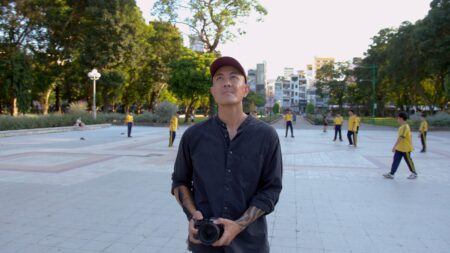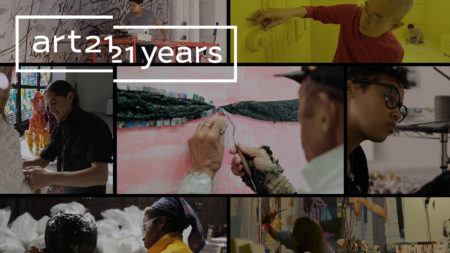Jocelyn Salaz is an artist and educator in Rio Rancho, New Mexico. She teaches art at Puesta del Sol Elementary School, and she has also worked with teenage witnesses of domestic violence at the non-profit Enlace Comunitario, which provides services to Spanish-speaking victims of domestic violence. She joined Art21 Educators in the program’s second year, and has remained an active member of the community ever since, presenting workshops at Summer Institutes and serving as a mentor for the program’s newest mentors. Dedicated to expanding access to the artistic process and teaching her students about underrepresented communities, Jocelyn joins us as the Educator-in-Residence for our upcoming Spring 2018 issue, “Rights of Passage.”
Why do you believe the thinking and practices of contemporary artists are important to incorporate in the classroom? What do students get out of it that they might not otherwise?
In the current educational landscape of high stakes testing, compartmentalized subjects and rigid math and literacy schedules, students may see education as a means to a predetermined end. Even among elementary students I see frustration when first attempts do not result in the magnificent, pristine artwork that the students envisioned. But in a world where every aspect of our lives are interconnected, where there are competing values and complicated issues with no easy answers, I think students benefit from a problem-solving, process-oriented mindset that models persistence and inquiry.
It is important for students to see that there are multiple ways to address ideas and concepts. Curriculum models that focus only on the “look” of a work of art and seek to replicate an artist’s style, materials, or techniques without inquiry may produce pretty pictures. However, they do very little teach students about making mistakes, questioning, engaging concepts with materials, techniques and aesthetics, expressing ideas and opinions, and solving personal and communal problems. Contemporary artists serve as great models for this type of thinking as they reflect on their process, play with materials, and make mistakes. The multiple approaches of artists—particularly those in the Art21 videos I show my students—reveal a variety of ways to tackle an issue or skill, modeling the persistence students need to be problem-solvers and innovators.
Why were you initially drawn to the Art21 Educators program?
I was initially drawn to Art21 after viewing the videos during art studio classes while I was working on my graduate degree in art education. Coming from an art history background, I was excited to see the work of contemporary artists dealing with contemporary issues as a model for my own budding studio and teaching practices. I specifically remember attending a screening of Alfredo Jaar’s Art in the Twenty-First Century segment at 516 Arts in Albuquerque, NM as part of their 2008/230-speak-out-art-design-a-politics” target=”_blank” rel=”noopener”>Speak Out: Art, Design & Politics exhibition programming. I was fascinated by Jaar’s conceptualization of images, their role in society and strategies for addressing real-world problems with images. Getting this peek into the thinking and processes of contemporary artists was incredibly inspiring to me as artist and educator. When I found the Facebook call for Art21 Educators, I saw it as an opportunity to explore how Art21 resources could help me more deeply explore contemporary art and practices with my own students, specifically young elementary students.
Read the rest of Jocelyn’s interview on the Art21 Magazine, and keep an eye out for her education posts throughout the upcoming Spring 2018 issue, “Rights of Passage.”


